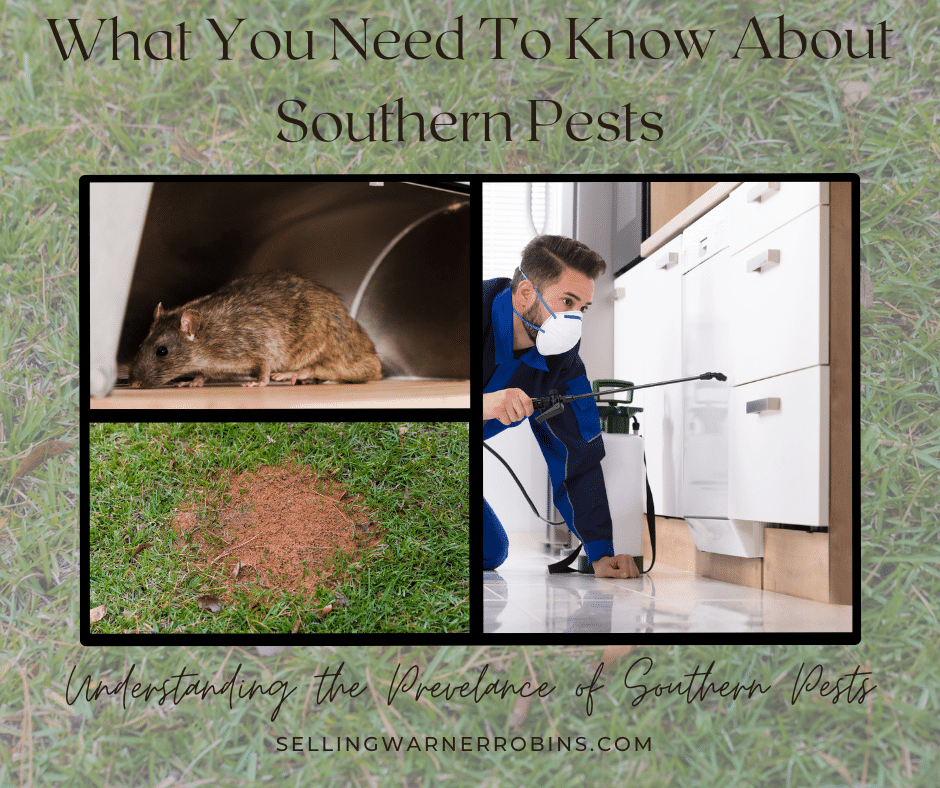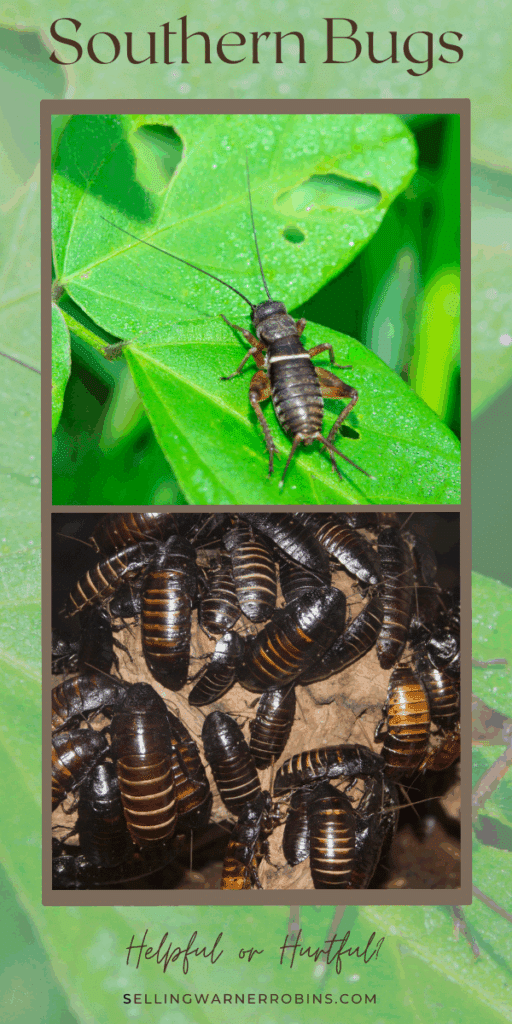What Homeowners Should Know About Southern Pests
Moving to a new home in the south can feel exciting until you discover you are sharing your space with some unwanted roommates – the variety of southern pests that thrive in the region’s warm, humid climate.
From persistent cockroaches to destructive termites, Southern homeowners face unique challenges that require a thorough understanding of local pest behavior and effective prevention strategies to avoid potentially costly pest infestations.
Whether dealing with wood-destroying insects or disease-carrying rodents, knowing how to protect your home and family from these invasive creatures is crucial for maintaining a healthy, comfortable living environment in the South.

Understanding the Prevalence of Southern Pests
The South’s warm and humid climate creates perfect conditions for various pests to flourish year-round. These conditions make pest control especially difficult for homeowners in southern states, where cockroach infestations remain a widespread concern.
Location plays a crucial role in determining your home’s pest exposure. Several factors can increase your risk of unwanted visitors, and it’s essential to understand these potential threats. Here are some key situations that might put your home at higher risk:
- Properties adjacent to wooded areas or natural habitats
- Neighborhoods with inadequate waste management
- Areas with vacant or abandoned buildings
- New construction sites near established pest populations
- Regions with high rainfall and moisture levels
The pest pressure in southern homes often requires a more aggressive approach to prevention and control. Newly constructed homes aren’t immune to these challenges, especially when built near natural areas or neighborhoods with existing pest problems.
If you’re dealing with persistent invaders like moles, getting help from a trusted pest control service can significantly improve the protection of your property.
Being proactive about pest control from day one can help you avoid costly and frustrating infestations.
| Did You Know? Southern pests don’t just target homes—they can also infiltrate sheds, garages, and crawl spaces, making it crucial to think beyond your main living space when planning pest control strategies. |
Cockroach Hotspots and Regional Challenges
The South faces unique pest challenges, particularly with cockroaches thriving in the region’s climate.
These persistent insects have made southern cities their primary habitat, with 41% of New Orleans homes reporting cockroach sightings. This troubling pattern shows how deeply rooted these pests are in Southern living spaces.
Living in the South means dealing with specific pest patterns that differ from other parts of the country. The warm, humid conditions create an ideal environment for cockroach populations to flourish year-round.
New homeowners should be extra vigilant about these unwanted guests, as they can quickly establish themselves in residential spaces.
- Regular cleaning and maintenance become essential daily tasks
- Sealing entry points helps prevent cockroach invasions
- Proper food storage reduces attraction for these pests
- Quick response to early signs prevents major infestations
Understanding these regional pest dynamics helps new homeowners take charge of their living spaces. Remember that quick action often makes the difference between a minor inconvenience and a major infestation problem.
| Why This Matters: For Southern homeowners, understanding how geography and climate influence pest behavior is key to maintaining a healthy, pest-free home in an area where infestations are more than just seasonal nuisances. |
Common Culprits in Southern Homes
While many homeowners might think they’re prepared for basic pest control, the unique challenges of Southern living often catch them off guard. The mix of heat and moisture makes homes especially attractive to unwanted visitors.
Here’s what you’ll typically encounter in Southern residences:
- American and German cockroaches that thrive in dark, damp spaces
- Fire ants are building mounds across lawns and gardens
- Wood-destroying termites are active throughout all seasons
- House mice and rats seek shelter, particularly during cooler months
- Mosquitoes breed in standing water and shaded areas
Each of these unwanted guests has unique habits and preferences that make them particularly successful in Southern environments. Understanding their behavior patterns helps you spot early warning signs of their presence.
For instance, termites prefer areas with wood-to-ground contact, while rodent activity often increases near food storage areas.
It’s much easier to address pest issues when they’re caught early rather than waiting until they’re established in your home.
Health and Safety Risks Associated with Infestations
Living in the South means dealing with pests that affect your family’s well-being. These unwanted visitors bring more than just discomfort—they can carry dangerous pathogens into your home.
Cockroaches, for instance, leave behind droppings and shed skin that trigger asthma attacks and allergic reactions, particularly in sensitive individuals.
As you can see, household pests pose various threats that need immediate attention. Here are the key health concerns you should watch out for:
- Rodents can spread harmful bacteria through their urine and droppings, causing severe respiratory issues.
- Mosquitoes transmit life-threatening viruses and parasites through their bites.
- Ants contaminate food supplies and kitchen surfaces with bacteria.
- Cockroaches carry disease-causing organisms that can lead to food poisoning and other illnesses.
- Dust mites and pest debris worsen allergies and asthma symptoms.
These invasive creatures shouldn’t compromise your loved ones’ health. Kids playing on the floor, elderly family members with weaker immune systems, and those with existing health conditions face higher risks from pest-related problems.
Taking swift action against infestations isn’t just about comfort – it’s about protecting your family’s health and creating a safer living space for everyone under your roof.
| To Do: Schedule a thorough home inspection with a certified pest control professional to uncover hidden infestations before they impact your family’s health. |
Structural Damage and Financial Impact
Your Southern home faces unique challenges from destructive pests that can silently wreak havoc on your property. Termites and rodents often work behind walls and in crawl spaces, creating extensive damage before you notice any signs. 
These unwanted visitors don’t just nibble – they can compromise your home’s structural integrity and drain your bank account with costly repairs.
Here’s what to watch for to protect your investment:
- Sagging floors or ceilings might indicate weakened support beams
- Hollow-sounding wood when tapped, suggesting internal damage
- Crumbling baseboards or door frames
- Small holes along walls or near foundations
- Squeaking or scratching sounds inside the walls
A proactive approach to pest management isn’t just about comfort – it’s about safeguarding your home’s value. Think of it as an insurance policy against unexpected repair costs. Regular inspections help catch problems early, saving you thousands in potential damages.
Although DIY monitoring is helpful, partnering with pest control experts who understand local threats can make all the difference in protecting your investment. They’ll spot warning signs you might miss and help create a solid defense strategy that fits your situation.
Prevention Strategies that Work
Taking charge of pest control starts with simple yet effective steps you can immediately implement.
Creating physical barriers and eliminating attractants are proven ways to stop unwanted critters from making your home their own. It’s much easier to prevent an infestation than to deal with one after it’s established.
Essential Preventive Measures
- Install door sweeps on all exterior doors to block tiny gaps
- Seal cracks around windows, pipes, and foundation with appropriate caulking
- Fix leaky faucets and pipes promptly to reduce moisture sources
- Store food in airtight containers and clean up spills immediately
- Keep firewood stacked away from your house’s exterior
- Trim tree branches and shrubs that touch your home
- Remove leaf piles and debris from your yard regularly
A consistent cleaning schedule plays a massive role in pest prevention. Regular vacuuming, dusting, and decluttering eliminate potential hiding spots and food particles that might attract pests.
Remember to pay special attention to often-overlooked areas like under appliances and inside cabinets. Don’t forget about your yard – keeping grass trimmed short and removing standing water can significantly reduce pest populations around your home.
Homeowner Mistakes That Attract Pests
Homeowners often unintentionally create environments that attract pests, leading to infestations that can cause damage and discomfort.
Understanding the common mistakes that invite pests is crucial for effective prevention and control. Here are the key homeowner errors that attract pests and how to avoid them:
Ignoring Standing Water and Moisture Issues
- Standing water invites pests. Mosquitoes, cockroaches, silverfish, and termites thrive in stagnant water.
- Check and empty water sources. Inspect pet bowls, birdbaths, and clogged gutters regularly to prevent moisture buildup.
- Fix leaky pipes quickly. Dripping faucets or plumbing leaks can create perfect conditions for moisture-loving pests.
- Ensure proper drainage. Poor drainage allows water to pool around your home, attracting pests and causing structural issues.
- Avoid overwatering lawns. Excess moisture can draw mosquitoes, termites, grubs, and other bugs to your yard.
- Water early in the day. Morning watering and well-drained soil reduce dampness and pest risk.
Improper Pet Food and Bedding Care
Leaving pet food out overnight or not cleaning pet food bowls and bedding can attract ants, cockroaches, fleas, and ticks. Storing pet food in sealed containers and maintaining cleanliness in pet areas helps reduce pest attraction.
Poor Garden Maintenance
Overgrown plants, untrimmed shrubs, and accumulated dead leaves or decaying organic matter provide shelter and food for pests like rodents, termites, and insects. Regularly trimming vegetation, removing debris, and maintaining plant diversity can reduce pest habitats.
Improper Food and Waste Storage
Food scraps, spills, and uncovered garbage attract pests like ants, flies, cockroaches, and rodents. Leaving food out — whether in open containers or dirty dishes — offers easy access to nourishment. Likewise, overflowing or uncovered trash bins create a major lure for pests.
To reduce pest attraction:
- Store all food in airtight containers
- Wipe up crumbs and spills immediately, especially in kitchens and dining areas
- Keep trash in sealed bins and dispose of waste regularly
- Clean around trash cans to remove residue and odors
- Avoid leaving pet food out overnight.
Taking control of food and garbage storage is one of the most effective ways to prevent infestations.
The Importance of Ongoing Pest Inspections
Watching your home’s pest situation can save you from major headaches. As a new homeowner in the South, you’ll want to look for signs that unwanted visitors have made themselves comfortable in your space.
Regular monitoring helps you spot problems early, before they spiral into costly nightmares. Your keen observation skills are your first line of defense against pest invasions.
By checking your home frequently, you’ll better understand normal versus suspicious activity in and around your property.
Quick detection means faster, more effective treatment options and less chance of severe damage.
- Look for droppings, especially in dark corners, under sinks, and near food storage areas
- Check for gnaw marks on wood, wiring, or food packaging
- Inspect for mud tubes along foundation walls and baseboards
- Watch for unusual insect activity near windows and doors
- Pay attention to strange sounds in the walls or attic spaces
Setting up a consistent schedule for home inspections puts you in control of pest management. Monthly checks of key areas like kitchens, bathrooms, and basements can reveal early warning signs that might otherwise go unnoticed.
Remember, catching pest problems early isn’t just about protecting your property – it’s about maintaining a healthy, comfortable living space for you and your family.
| Why is it important? Home inspections refer to routine visual checks of a home’s interior and exterior spaces, identifying early indicators of pests, damage, or other maintenance issues before they worsen. |
Choosing Effective Professional Help
Professional pest control experts bring specialized knowledge and proven solutions that make a real difference in keeping your home pest-free.
While DIY methods can help with minor issues, certified professionals have access to advanced treatments and techniques that deliver better results. They’ll create custom plans based on your pest challenges and home layout.
What to Expect from Professional Pest Control Services
- Thorough property inspections to identify active infestations and potential risk areas
- Safe and effective treatment methods that protect your family and pets
- Regular monitoring and follow-up visits to prevent future problems
- Expert advice on preventive measures you can take between service visits
- Emergency response capabilities for sudden pest issues
Working with a trusted pest control service can give you peace of mind, especially when dealing with persistent pests like moles. The best providers will focus on both immediate pest removal and long-term prevention.
They’ll also help you understand what attracts pests to your property and suggest practical changes to make your home less inviting to unwanted visitors. Getting professional help early on can save you from costly damage and health risks.
Essential Tips for Long-Term Pest Prevention
Protecting your Southern home from pests requires a comprehensive understanding of the unique challenges posed by the region’s climate and ecosystem. From persistent cockroaches to destructive termites, new homeowners must remain vigilant and proactive in their approach to pest management.
Being informed about prevention strategies and maintaining regular inspections can save thousands in potential damage and protect your family’s health and comfort.
Remember, in the South, pest control isn’t just a seasonal concern—it’s a year-round commitment essential to maintaining your home’s value and peace of mind.
if you found this article on what new homeowners should know about southern pests helpful, please share the article so more consumers can also benefity from the information provided.
What You Need To Know About Southern Pests
About Anita Clark Realtor
Anita Clark has written 687 posts on this blog.
by Anita Clark Anita is a residential Real Estate Agent in Warner Robins Georgia, with Coldwell Banker Access Realty (478) 953-8595, aiding buyers and sellers with all their real estate questions on her Warner Robins blog.



